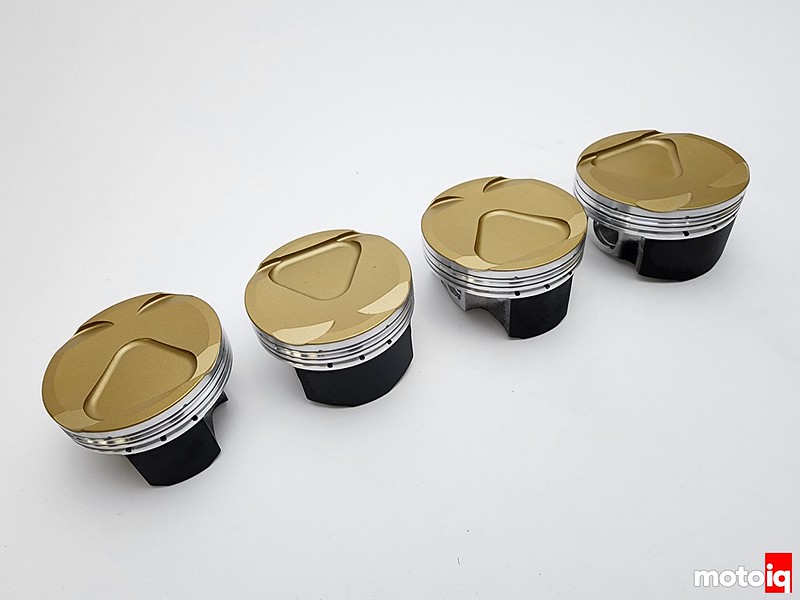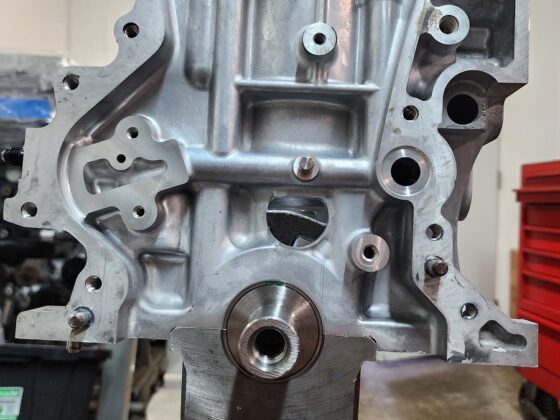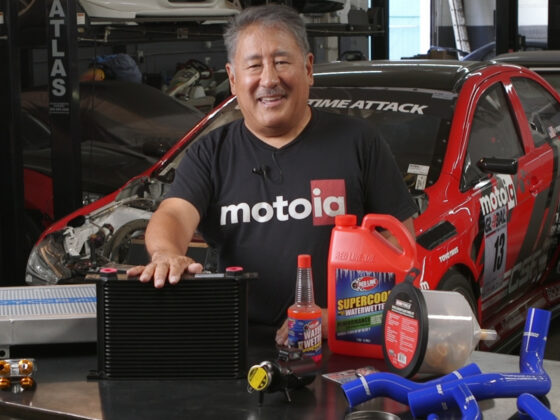
If you have been following our build-up of the Nissan MR20DDT, We have been examining the suitability of this engine to be converted to turbocharging. We were able to identify a few shortcomings and since we were on a tight budget and timeline, what low-hanging fruit had to be addressed to reliably produce a moderate level of power. One of the must-dos was to reduce the compression ratio and strengthen the ring lands of the pistons. Since there is not much interest in building performance MR20DDs, we did not have any shelf piston options. We had to resort to getting a custom piston made by our friends at JE Pistons who came through in record time for us with some beautiful feature-filled pistons.

Our pistons are forged from 2618 aluminum alloy, 2618 is a tough and ductile low silicon alloy that is particularly well suited for forced induction and nitrous applications. 2618 isn’t as long-lasting as the stock hard hypereutectic pistons but it can take the pressure better. 2618 expands more than the stock pistons and is going to require a piston-to-wall clearance of about 3x that as stock. This can be noisy but JE has the material down and has a piston cam design that is pretty quiet. We will also do an offset piston pin that when combined with the offset crank should keep piston slap and noise to a minimum.
For our dome design, we lowered the floor of the pre-chamber and made the piston valve reliefs larger than stock and also reduced the pin height by 0.008″ to allow for piston rock at TDC and to give a little leeway when decking the block. These changes reduced our compression ratio to the designed 10:1. JE also gave the dome a layer of gold thermal barrier coating. This protects the piston and helps keep it cooler, at 350 degrees aluminum can lose almost half of its strength so this can help, by reducing heat transfer into the piston combustion efficiency can also be improved.

Like the OEM pistons, the JE pistons are also packed with high-tech features. We based our piston on JE’s asymmetrical FSR forging. To reduce weight, JE did a lot of CNC undercrown milling to get rid of every bit of excess material that their FEA analysis suggested.

The FSR forging has more skirt area on the higher loaded thrust side of the piston. This gives more support and more bearing area helping with piston and bore life. The wider skirt also aids in stability in the bore which is good for ring life and sealing. The non-thrust side is narrowed down to save weight and reduce friction. As the Nissan piston was not designed for turbocharged use and higher piston pin and pin boss loads, we made this area stronger and wider for more pin engagement in this area.



